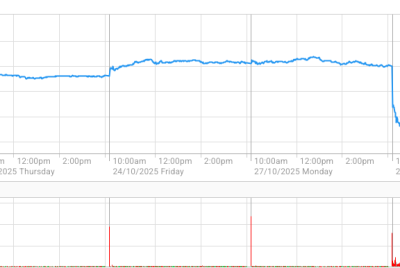Google Chrome OS
Originally an extension to the Google Chrome browser, the Google Chrome Operating System is designed for people who spend oodles of time on the web. The Chrome OS is Google's version of what an operating system ought to be.
What exactly is the Chrome OS
The Google Chrome OS is an open source, lightweight operating system. Google is designing the said operating system to start up and get its users onto the web within a few seconds. The Chrome OS was initially geared to be used on netbooks.
Google had minimized the user interface so it will not get in the way. Most user experience will take place on the web instead. Security is one of Chrome OS' key features. The underlying security architecture of the operating system was redesigned to prevent viruses, malware and security updates from crashing into users' computers.
Aside from its security, the Google Chrome OS also boast of its simplicity. When a user boots up and logs in, Chrome automatically starts up using your own settings. It will have your favorite websites, your preferred setting, and your preferred theme. The Chrome OS does not have a desktop due to the fact that it is entirely Web-based.
What you should know about Chrome
The Chrome OS is basically looks like its browser counterpart. It is based on preexisting web services such as Gmail and Google Docs. The said operating system uses HTML 5 to integrate web applications into it, and since it is using the latest HTML version the integration will seem more natural. The code actually allows the Chrome to gain more access to local resources. Using the Chrome OS is going to be similar to the user experience you get from using the Chrome browser. The applications that you have on Chrome OS will also be used in the Chrome browser.
Now, for the down side.
The Google Chrome OS will not support your hard drives. The operating system will only give its users a solid state storage. Also, people who would want to use Chrome would have to purchase it. In addition to that, the Chrome OS is not intended for desktops. Google produced this operating system with netbooks in mind.
Since the operating system is Web-based, Chrome OS users will not be able to use programs that do not use the web. Another problem connected to its being web-based is that the whole operating system necessitates one to be connected to the Internet. So, if you do not have Net connection, you will also not be able to use this OS.
What about the Android project
Google made it clear that Google Chrome is a totally new project different from Android. Android works for a variety of devices from mobile phones so users can set top-boxes to netbooks. The Google Chrome OS, on the other hand, is meant for people who spend a lot of time on the web. The Chrome OS is designed to ramp up computers from small netbooks to desktop systems.
There may be similarities between the Chrome OS and Android but the two are still entirely different entities.
How it looks like
If you have seen and used the Chrome browser, then you will pretty much have a god picture of how the Chrome OS would appear. The Chrome OS also function using different tabs similar to the Chrome browser. These tabs serve as the operating system's taskbar. A user can sort his or her start menu and open up a panel of shortcuts.
Smaller windows can be utilized for other applications. Users can have these smaller windows places above his or her tabs all the time. This feature looks similar to chat windows and music players. "Virtual Windows" can also be set up, meaning a user can have multiple windows open of Chrome OS. This would allow the person to switch between tasks by going from one to the other.
Still on the works
The Chrome OS is still undergoing a lot of touch ups and may still evolve. Recently, Google had released Chrome 6 Beta, the latest version of the Chrome operating system. Chrome 6 has obvious improvements in Javascript rendering speeds. It is 15 percent faster compared to earlier beta versions, making Chrome the fastest browser in the market by far.
A complete overhaul of the user interface, or UI, was also done on Beta 6. The change resulted to a simplified and cleaner look. An new feature added to the new test version is Autofill. Autofill, according to Google, will help users fill in web forms automatically with information one specifies. This saves the Chrome from the hassle caused by typing and re-typing things again and again.





















